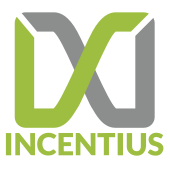Why choose MEAN Stack Development for your next project? Marketing January 20, 2022
Creating a web application necessitates the use of a software stack that you can trust, rely on, and that deliver effective results. Modern developers employ a mix of new technology to achieve faster and better results in their projects. The MEAN stack is a great example of this type of innovation.
What is MEAN stack?
MEAN Stack is a JavaScript-based web and app development platform utilized by millions of people across the world. It is a collection and integration of technologies used to create web apps. Several Web App Development Companies employ MEAN stack technology, which stands for “MongoDB, Express.js, AngularJS, Node.js.” It’s an open-source stack for developers who want a quick and systematic way to prototype MEAN-based web apps. MEAN is a full-stack JavaScript that runs from client to database to server. You can deal with your items utilizing specific attributes with MEAN Stack programming. You may also revolutionize and update the data layer without having to worry about migrations. Understanding the benefits of MEAN stack development and what you require from the project will also help you decide what factors you need to consider while hiring a software development company, or whether you should go with in-house development or outsourcing.
Why should you choose MEAN stack development for your next project?
1. Reduced cost development:
MEAN JS is an open-source full-stack JavaScript framework that can help you stay open-source and free. Technology is written in MEAN Stack in an open-source programming language, JavaScript. As a result, the platform is open-source as well which means you can download it for free and use it. Furthermore, when compared to the LAMP stack, the MEAN stack requires fewer total developers. License costs are also not charged by MEAN Stack development businesses.
2. Flexible and efficient:
After app creation is complete, the developer can easily begin testing on a cloud platform. MEAN Stack makes developing, testing, and deploying apps considerably easier and more efficient. It is more efficient than most other systems and has a competitive advantage. JavaScript is one of the most widely used languages in project development, and it makes shifting duties and handling issues simple for the entire team.
3. Based on Javascript:
The JavaScript language is used to implement the entire MEAN web development process. JavaScript is a multi-paradigm, high-level language that is used extensively in data management and recovery. Overall, it’s a very developer-friendly framework that helps the entire MEAN Stack development team by providing faster backend replies and allowing the application to evolve.
4. Easy data transfer:
Anybody, whether they are front-end or backend developers, can learn MEAN stack development quickly. It is simple to comprehend, grasp, and apply during the development process. JSON files are a data exchange format that is used by Node.js and Angular. With the help of mean stack development services, data transportation across the system is also relatively painless.
5. Interactive:
Real-time apps can help you engage a wide range of users. In any web application, Angular is well-known for its amazing user interface (UI) and user experience (UX). As a result, many of your favorite brands employ Angular.JS, which is widely regarded as the best front-end technology. It also supports the Model-View-Controller architecture, which ensures that the user interfaces are of high quality.
6. Influential community:
JavaScript has a big user base. The frameworks are enabled by developers. The deprecation of Angular.js in favor of Angular is the most popular example within their network.
7. Infinite modules:
With the help of Node.js, the MEAN stack can control an endless number of modules. It also provides a large number of JavaScript modules which can be beneficial to the users. Because these libraries provide pre-defined outputs, developers don’t have to write long programs to get certain results. These libraries are extremely quick and ensure that the entire code is proper. Overall, libraries save the programmer time and increase the rate of the creation of software.
8. Large Talent Pool:
JavaScript, being one of the most frequently used programming languages in the world, provides aid to developers all over the world and contributes to the evaluation of development companies. There are also specialists all over the world that are dedicated to helping other medium-stack web developers with their problems.
9. Brilliant Performance:
NodeJS is a key component of the complete MEAN stack for development framework, ensuring high performance. With its high-end outputs, it may be used to create interactive web-based applications. NodeJS is easier to grasp, understand, and provide better outcomes than other programming languages. NodeJS is the most widely used framework for creating high-performance server-side solutions and tools and you can find developers who can help you create web applications.
10. Efficient Management:
Companies that use MEAN stack projects benefit from the use of JS. There is no confusion for the management team because the dynamic teams all speak the same language.
Conclusion:
For building dynamic, exceptional, and highly rated online apps, MEAN Stack makes for the greatest possible choice of framework. It is used by top mobile and web application development businesses that are increasingly using this contemporary approach to creating.


